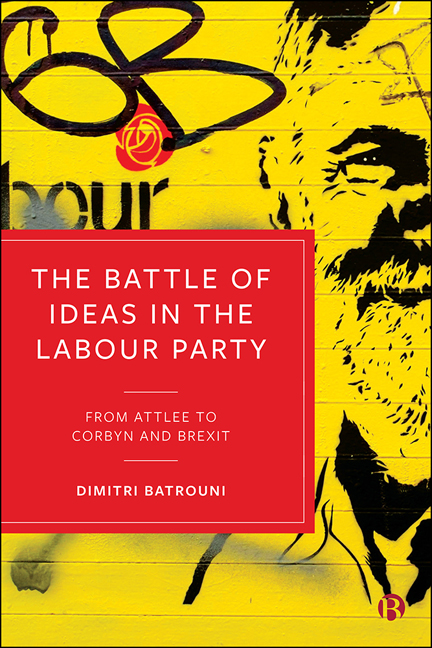Book contents
- Frontmatter
- Contents
- List of Abbreviations
- Acknowledgements
- Introduction
- 1 The Battle of Ideas in the Labour Party, 1945–92
- 2 The Rise of New Labour: Electoral Concerns Trump Ideology
- 3 Bridging the Divide: Ed Miliband and Ideas
- 4 Pre-distribution
- 5 Corbynism: The Left’s Resurgence
- 6 Corbynism: Brexit and Globalization
- References
- Index
3 - Bridging the Divide: Ed Miliband and Ideas
Published online by Cambridge University Press: 10 March 2021
- Frontmatter
- Contents
- List of Abbreviations
- Acknowledgements
- Introduction
- 1 The Battle of Ideas in the Labour Party, 1945–92
- 2 The Rise of New Labour: Electoral Concerns Trump Ideology
- 3 Bridging the Divide: Ed Miliband and Ideas
- 4 Pre-distribution
- 5 Corbynism: The Left’s Resurgence
- 6 Corbynism: Brexit and Globalization
- References
- Index
Summary
The economic downturn in 2008, which many equated to the depression of the 1930s, would harm any political party's electoral prospects. As Goes (2016: 19) stated, ‘for those few social democratic parties that were in power when the crisis hit Europe, the impact was devastating’. Gordon Brown, the then prime minister, became deeply unpopular during the crisis, with polling at one point indicating that ‘only 17% per cent of people [approved] of the Brown's government's record, while 70 per cent disapprov[ed]’ (Grice, 2008). While the polls remained consistently dire, no challenger to Brown's leadership emerged, meaning ‘Labour found itself stuck in the proverbial slow motion car crash as it slid to one of its worst showings at a general election since the Second World War’ (Bale, 2015: 3). The scale of the actual loss in the 2010 general election cannot be overstated. Quinn (2011: 403) claimed the party received ‘its second-lowest share of the vote since 1918’, despite an electoral system that both Bale and Quinn described as having a pro-Labour bias. Thanks to the electoral system, therefore, the number of seats Labour attained did not reflect the depths of its unpopularity. It masked the scale of the loss.
Yet, the Conservatives still failed to acquire a majority. This instigated a period of political uncertainty as both the Conservative and Labour parties sought to obtain a parliamentary majority, ostensibly through a deal with the Liberal Democrats. After negotiations that took place over several days, the Liberal Democrats entered a coalition with the Conservative party (see Laws, 2010). Labour's longest period in office had finally ended and the UK had its first coalition government in peace time since the 1930s. The coalition immediately embarked on an austerity programme that it claimed to be unavoidable. This was a strong and potent argument because at the time ‘there were no social democratic parties in government or in opposition with plausible ideas and policy responses that offered an alternative to austerity’ (Goes, 2016: 20). In this environment, there was a growing sense among some thinkers involved in the Labour Party, and in other parties, that an alternative could be developed and in doing so there was an opportunity to shift, quite fundamentally, the course of politics and government, particularly away from the New Labour brand.
- Type
- Chapter
- Information
- The Battle of Ideas in the Labour PartyFrom Attlee to Corbyn and Brexit, pp. 63 - 92Publisher: Bristol University PressPrint publication year: 2020



